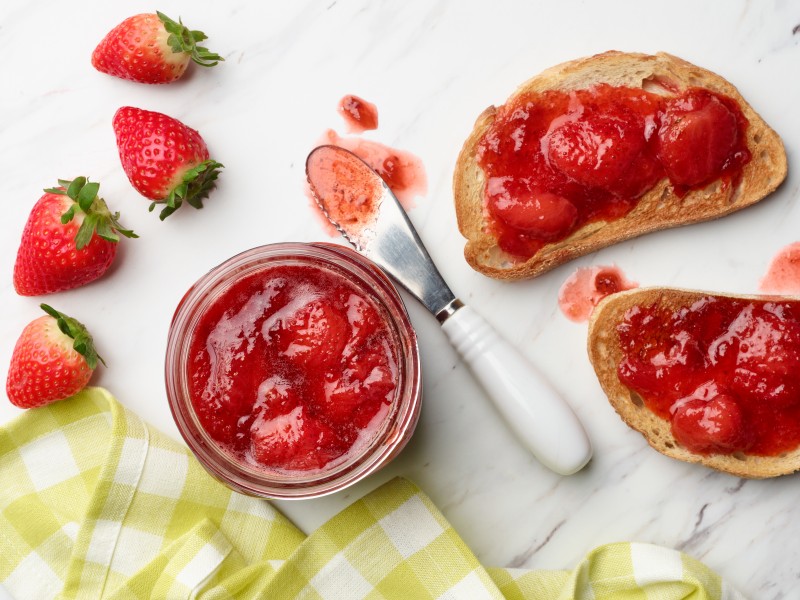What is pectin?
Pectin is a soluble fiber found in fruits and vegetables, especially apples and citrus peels. It’s a strong gelling agent used to thicken jams and jellies.
Food additive pectin is a naturally occurring thickener and stabilizer, helping jams, jellies, and fruit preserves set. Scientifically speaking, it’s a soluble fiber (a.k.a. a type of polysaccharide) found in the cell walls of most fruits and vegetables. “When heated with sugar and acid, pectin forms a kind of mesh that traps liquid,” says Camilla Wynne, author of Jam Bake. “As it cools, it sets and suspends pieces of fruit.”
Certain fruits—like apples, quince, currants, cranberries, grapes, and citrus—naturally contain high levels of pectin. That’s why marmalade gets so glossy and cranberries transform into that wobbly Thanksgiving sauce. Other fruits—like strawberries, peaches, sour cherries, rhubarb, tomatoes, and pears—have much lower pectin levels. Instead of firming up when exposed to heat, these fruits are more likely to turn mushy. To make them into jam, you’ll typically need to add more sugar and/or an extra thickening agent, like commercial pectin. Then there’s the in-between: fruits that contain moderate pectin levels, but do not gel as quickly or easily as high-pectin fruits. This category includes apricots, raspberries, blackberries, mulberries, bananas, and plums.

Pectin vs. Gelatin
Both food additive gelatin and pectin are thickening, stabilizing ingredients often used in cooking and baking. Fruit-derived pectin is vegan-friendly. Gelatin is a protein derived from collagen, usually from animal sources, which means it is not vegan or vegetarian. Because pectin requires sugar and acid to set, it’s mainly used in sweet recipes, while gelatin is commonly found in savory foods or foods that don’t require cooking, like these rainbow candies.
How does pectin work in jam?
Most jam recipes call for three core ingredients: fruit, sugar, and acid, like lemon juice (get our go-to jam formula here). As the mixture simmers, the sugar leaches water out of the fruit, allowing the pectin inside the fruit to react with the acid and bind into a powerful, liquid-trapping web. Like certain types of starch, pectin needs to heat to a certain temperature in order to activate. At 220°F (jam’s setting point), the pectin chains in the fruit naturally bind to each other to create that jelly feel. As soon as it hits that magic temperature, remove it from the heat: If pectin gets too hot, it loses its setting power.